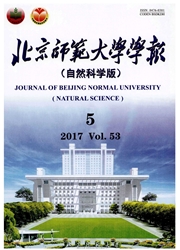

 中文摘要:
中文摘要:
“墨子”号量子科学实验卫星的发射,进一步吸引了人们对量子通信的关注.自1984年IBM的Bennett和加拿大蒙特利尔大学的Brassard提出第一个量子密钥随机分配协议以来,量子通信能否进行机密信息的安全直接传输一直是困扰量子通信界的一个难题.2000年,清华大学龙桂鲁等萌芽了量子安全直接通信的初步思想,随后的几年,我们建立了量子安全直接通信的完整理论,创建了4个判据,构造了2个最早期完整的量子安全直接通信代表性方案,为量子安全直接通信方案设计及其应用提供了物理原理依据,吸引了众多学者的关注与投入,促进了这一领域的发展.本文首先以第一个量子秘钥随机分配协议为例介绍量子通信如何为经典保密通信服务;随后,以最早期完整的2个量子安全直接通信方案为基础,阐述了为什么可以进行量子安全直接通信,并介绍量子安全直接通信的物理原理.
 英文摘要:
英文摘要:
Quantum communication has attracted a great deal of attention lately. Since the first protocol forquantum key distribution was proposed by Bennett and Brassard in 1984 (BB84), whether the principle inquantum mechanics can be used to transmit directly secret message in a secure way has perplexed scientists inthe field of quantum communication for more than 10 years. In 2000, Long and Liu proposed the first quantumcommunication scheme which can be used to transmit secrete message directly and securely. Subsequently, wegave the theory for quantum secure direct communication (QSDC), including its criterion and two pioneeringQSDC schemes with or without entanglement. These works provide the principles for designing QSDC schemesand attract much attention. In this review, we introduce the BB84 scheme for distributing a private keybetween two legitimate users, give the reason that the principles in quantum mechanics can be used to designschemes to transmit secret message directly and securely with the two pioneering QSDC schemes as examples.
 同期刊论文项目
同期刊论文项目
 同项目期刊论文
同项目期刊论文
 期刊信息
期刊信息
